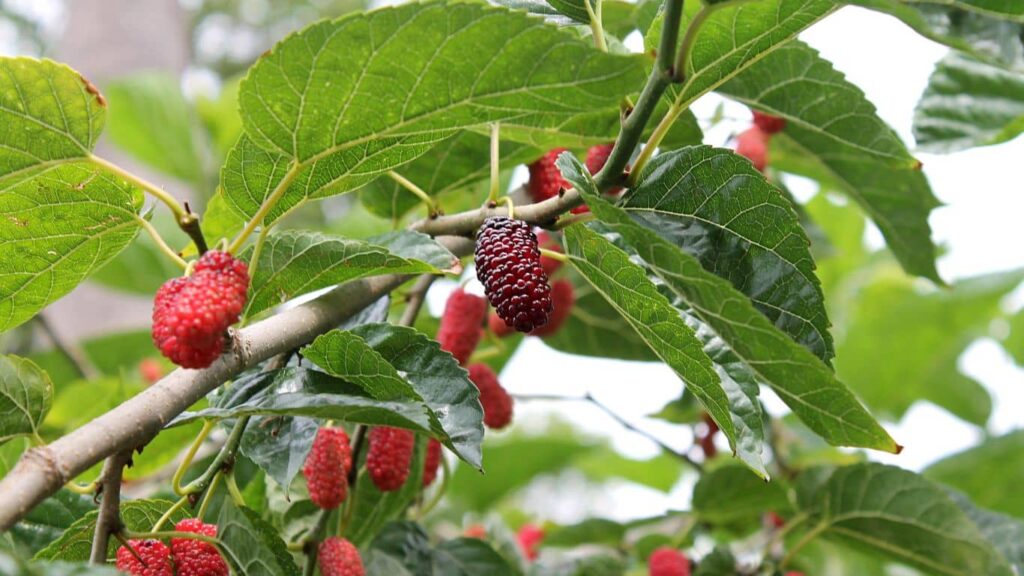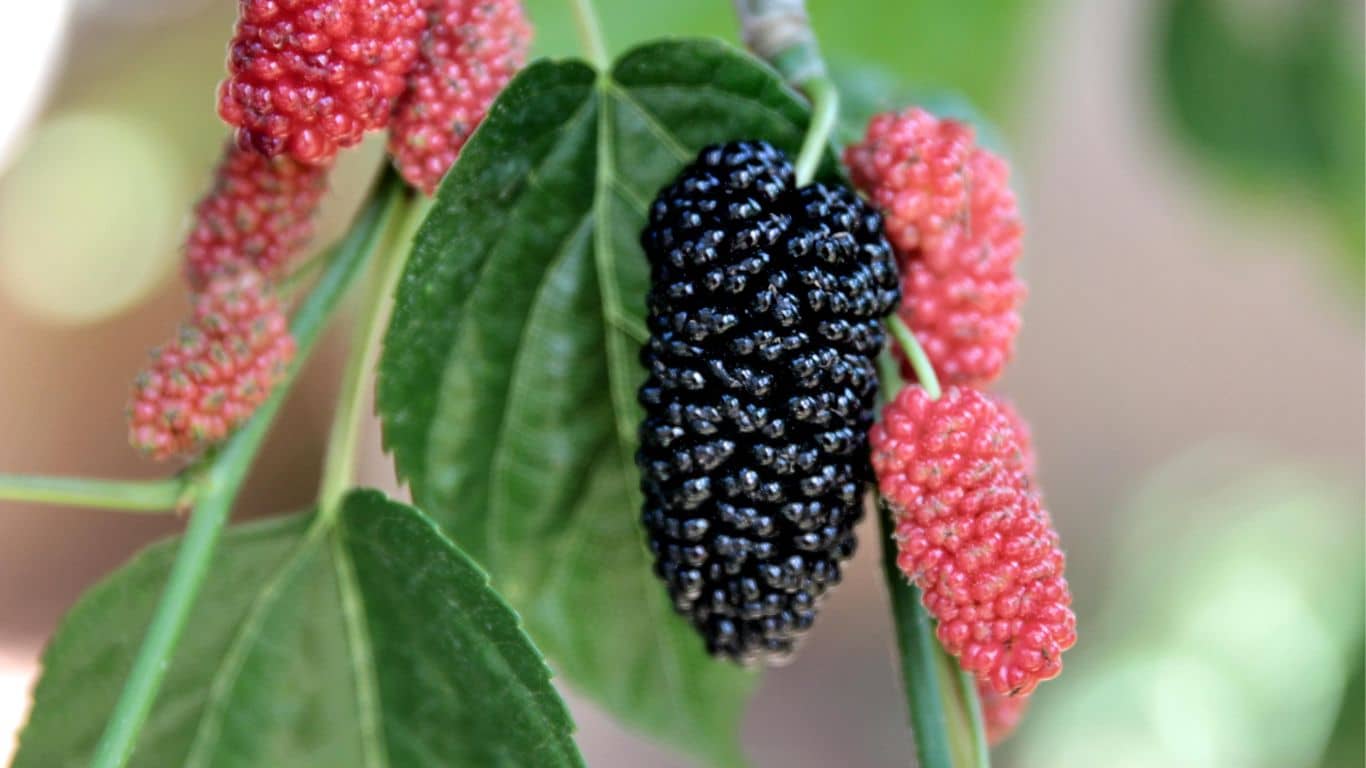Mulberry:
Table of Contents
Mulberry is a term that can refer to multiple things. Here are a few common uses of the term:
- Mulberry Tree: A mulberry tree is a deciduous tree belonging to the Moraceae family. It is known for its edible fruits, which are usually dark purple or black when ripe. Mulberry trees are native to Asia, Europe, and North America
- Mulberry Fruit: Mulberry fruits are small, sweet, and juicy. They resemble blackberries or raspberries in appearance and are often used in jams, jellies, pies, and desserts. They can also be eaten fresh or dried.
- Mulberry Silk: Mulberry silk is a luxurious type of silk produced by silkworms that feed on mulberry leaves. It is highly valued for its smooth texture, strength, and lustrous appearance. Mulberry silk is commonly used in high-quality clothing, bedding, and other textiles.
- Mulberry Color: Mulberry is also a color that is often described as a dark, reddish-purple shade, white mulberry. It takes its name from the color of the ripe mulberry fruit.
These are just a few examples of how the term “mulberry” is commonly used. If you have a specific context or question related to mulberry, please let me know, and I’ll be happy to provide more information.
Mulberry tree:
Mulberry belongs to the Moraceae family, also called common mulberry. It is a fast-growing tree that grows up to medium and about 10 – 20 meters tall. Whose fruits are sour-sweet, juicy, and ripe fruits are very sweet like honey. Its ripe fruit is eaten directly or by making juice and raw fruit is also eaten by making chutney. It is green in an unripe state and red, pinkish-red when ripe, and black when fully ripe. Its soft leaves are used as food for silkworms, hence it is also called the silkworm mulberry tree.
The scientific name of mulberry tree – Morus alba
Family of mulberry tree – Moraceae
The mulberry tree in Hindi – sahatut, shahatut, Tutri, Chinni, Tuti, Reshmi Chetu, etc. are known by Hindi names.
This tree is easily cultivated in many temperate climates in the world for sericulture and fruit use and is used for sericulture, fruit, and medicinal uses (white mulberry tree), that is, the main role of this tree in sericulture. Its fruit is also used in other juices, sweets, etc.
Read more: vegetables scientific name and Family
mulberry tree images:

Nutrients and minerals are found in abundance in its fruit, such as fiber, vitamin-A, vitamin C, calcium, magnesium, potassium, phosphorus, etc. For this reason, it is also used medicinally in Ayurveda (especially white mulberry tree).
Benefits:
- Help in improving digestion power.
- Increase red blood cells.
- Useful in anemia.
- Antioxidant. (Its tree also has properties to cure skin diseases.)
- Beneficial for the eyes.
- Maintaining mental health is also useful in reducing weight.
- increase resistance.
- Its consumption in summer provides relief from burning in urine.
Read more: fruits botanical name and Family
Mulberry tree leaves:
Its leaves are soft and smooth in dark green color with a saw-like structure from the edge, with a shiny upper surface and raised stripes on the lower surface.

A decoction of its leaves is made and drunk, which provides relief for other diseases such as hoarseness, tonsils, etc. And by making a paste of its leaves and bark and applying it, skin diseases can also be cured.
Its leaf (mulberry leaves) is the only main food of silkworms, which consumes more and higher quality silk. Talking about growing it, let us tell you that it is easily grown by cutting, layering, and seeding. There is no need for much care, water should be kept on time.
For more information about the mulberry or mullbeery tree, you can visit Wikipedia. And you can also search this topic by the name “Botanical name of the mulberry tree”.
